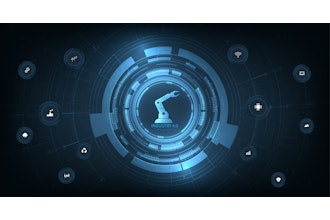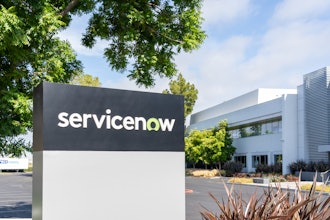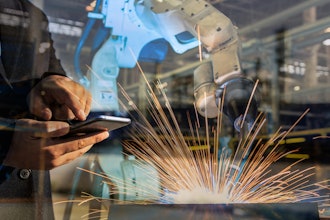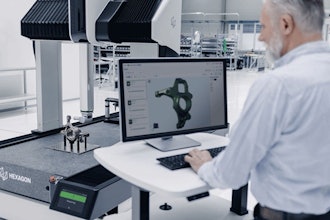Process-centric industries face a dynamic and complex manufacturing landscape. But thanks to the increased use of digital technology on the plant floor, more data is available to help address these challenges than ever before.
Modern batch systems are a critical part of the contemporary industrial ecosystem. Not only do they deliver data-driven control to support flexible and consistent production processes. But modern batch systems also enable business systems – and help drive continuous optimization across a Connected Enterprise.
The Evolving Role of Batch Systems
Since their inception, automated batch systems have shared a common goal: making a complex process easier to manage. Across much of the industry, automated systems have replaced manual, paper-based processes to reduce human error – and pave the way for better data collection and greater production efficiencies.
At the same time, traditional batch systems are limited in the value they can deliver. Designed for tight control – not speed – conventional systems cannot take full advantage of the processing power now commonplace in industrial environments.
In addition, traditional systems are typically based on proprietary technology and isolated for security purposes. This makes extraction of data and integration with business systems challenging at the very least.
Today, modern batch systems are beginning to dispel conventional mindsets. Featuring contemporary interfaces and a design for security approach, modern systems solve batch processing in a standardized, modular and efficient way. And also enable fast and secure information integration that accelerates business performance.
Understanding the Relationship: Modern Batch, MES & ERP Systems
Achieving optimal information integration throughout the enterprise is dependent on system architecture – and a clear understanding of the system hierarchy that can most efficiently deliver that information.
Not so long ago, a clear delineation between batch, manufacturing execution systems (MES) and enterprise resource planning (ERP) systems was marked by proprietary networks and complex gateways. The system hierarchy and distinct functionality of each system was easily understood, but these distinctions also made information integration difficult to achieve.
That began to change with the convergence of operations technology (OT) and information technology (IT) – and the adoption of Ethernet and the IP protocol as the de-facto networking standards for industrial automation and control systems (IACS)3.
Convergence – and the promise of a more information-enabled architecture – is a transformative development in manufacturing. But, it has blurred the lines within the hierarchy. Specifically, when MES and ERP systems have a more direct path to plant floor information, the value modern batch systems can deliver throughout the enterprise may not be clear.
Certainly plant-level transparency to MES and ERP systems does not replace process execution. And easing recipe management and enabling repeatable quality through enforced workflows and standard operating procedures are critical functions a modern batch system performs.
But so too are the advanced analytics and reporting modern systems can deliver to support process improvements, product development and regulatory compliance.
It’s About the Information
At its core, a modern batch system extends beyond process execution to collect, secure and share data. And more importantly, modern systems can transform unique process data into contextualized information for use across The Connected Enterprise.
Collects Information
Automated batch systems have always collected data. But traditional batch systems have struggled to keep up with modern applications – and the amount of information – generated by contemporary equipment.
For example, a modern filtration process in a craft brewing application could include more than 60 steps – and produce copious amounts of data. While a traditional batch system can maintain procedural control, it is not designed to collect the quantity of data this system can produce at typical production speeds.
To deliver optimal value to higher-level systems, a modern batch system must be responsive and robust enough to capture the goldmine of data today’s smart equipment produces.
Simply put, modern systems collect an extraordinary level of process granularity – plus real-time material and equipment tracking. And then centralize that information in a database that can be used to improve procedural control and resource management.
Secures and Shares Information
But in many ways, collecting and centralizing data is the relatively easy part of the process. Sharing that data with higher-level systems – while maintaining data security – is more complex.
Certainly, intellectual property is the most valuable possession a company owns – and much of that intelligence is contained within the batch server. Therefore, securing batch information is a critical requirement of any operation.
Restricting physical access to batch servers is one way to help secure systems. And proprietary, closed networks that isolate batch systems is another. But these methods – still in place across much of industry – can make any integration with business systems difficult.
Data integration usually involves multiple gateways, OPC servers and custom tools – and is anything but seamless. And despite precautions, closed networks and complex integration methods do not guarantee system security.
In other words, “security through obscurity” is not a viable option in today’s world. Virtually every proprietary system can be identified and targeted by knowledgeable, malicious actors. In fact, many would argue that propriety systems are especially vulnerable since they lack access to industry-standard virus protection and security expertise4.
A modern batch system uses a “design for security” approach that secures production systems and intellectual property while helping ease data integration. Modern batch systems help enable secure data sharing across multiple lines and multiple sites. Simultaneously, modern systems make data available for continuous improvement analysis. And help protect the integrity of data so that it can be leveraged in regulatory and quality control reporting.
How? First, the system confines recipes to the production area through encryption, which renders the data indecipherable off the batch server.
Second, modern systems rely on a defense-in-depth security architecture, based on unmodified Ethernet. This network security framework supports IT/OT convergence – plus creates critical layers of protection between production and enterprise systems.
Finally, a modern approach eases data sharing across systems by using industry standard formats, such as SQL, instead of proprietary languages. In addition, modern batch systems are built to integrate and work with higher-level systems – and include standard interfaces that make that functionality seamless.
Converts Data into Actionable Information
Modern batch systems are designed to be tied to a wide range of plant and business systems and to share event-driven process data with those systems. Modern batch systems also leverage shared information to execute actions that optimize production performance.
A key characteristic of modern systems is the speed at which actions can be executed. For example, a modern system can interface in real time with a laboratory information management system (LIMS) in the quality control laboratory. Based on testing results reported by the LIMS, the batch system automatically proceeds with production – or pauses or aborts the process based on the exception condition.
In addition, modern batch systems can dynamically reassign equipment and processes based on the lab results to better manage resources. And provide a web-based exception report that can be accessed by business systems.
Sharing a common network infrastructure with the rest of the plant, modern systems also enable more streamlined reporting and easier integration with manufacturing intelligence systems. Of course, modern batch systems can provide reports that solve common needs – like production exceptions and track and trace genealogy.
But unlike traditional systems based on propriety platforms, modern batch systems provide information that can be easily combined with HMI and other systems to create a cohesive, single reporting structure. Modern batch systems can also deliver real-time information to manufacturing intelligence systems, which aggregate that data and provide additional context from other systems.
Keep in mind, the power of a modern approach extends beyond reporting and the exchange of information between systems. Ultimately, modern batch systems enrich The Connected Enterprise – and provide people with information that enables better, faster decision-making.
Whether enforcing an operator signoff or alerting a manager to a process abnormality at a plant miles away, modern batch systems use the right technology and tools to deliver contextualized information to the right people – in real time.
A Critical Link in The Connected Enterprise
Across much of the processing industry, a modern batch system is a critical link in The Connected Enterprise.
Thanks to a standard network architecture – and common data repository for master recipe management – modern batch systems enable an extraordinary level of process control, visibility and integration.
Modern systems leverage the advances in smart technology to capture more data than ever before. And make that information available for analysis and use by other systems. As a result, information can be shared and performance compared across manufacturing lines or multiple facilities to gain new insights and drive higher levels of consistency and efficiency.
At the same time, modern batch provides a secure framework that protects the integrity of intellectual property and processing data.
Modern batch systems are truly information-enabled – and help companies leverage the power of The Connected Enterprise to drive continuous improvement and optimize production performance.























